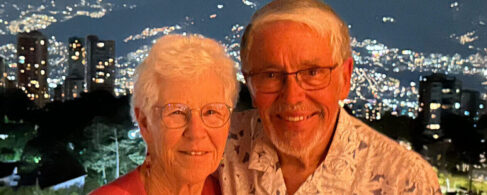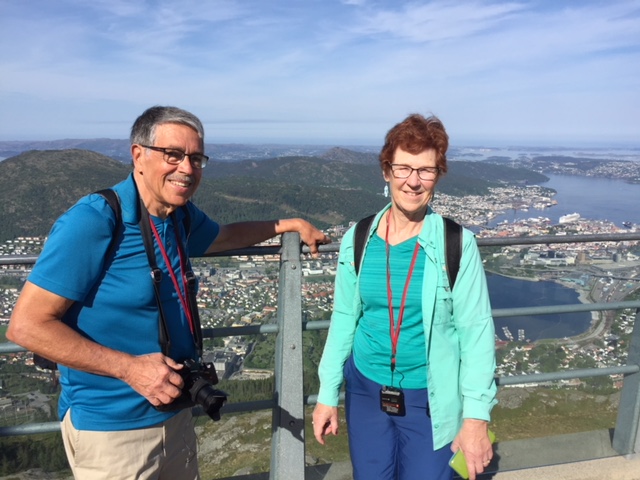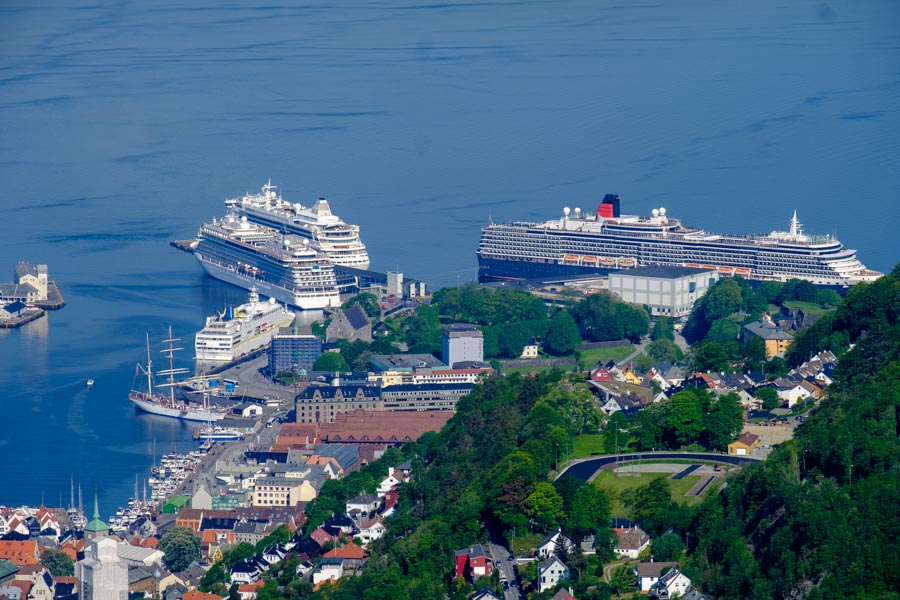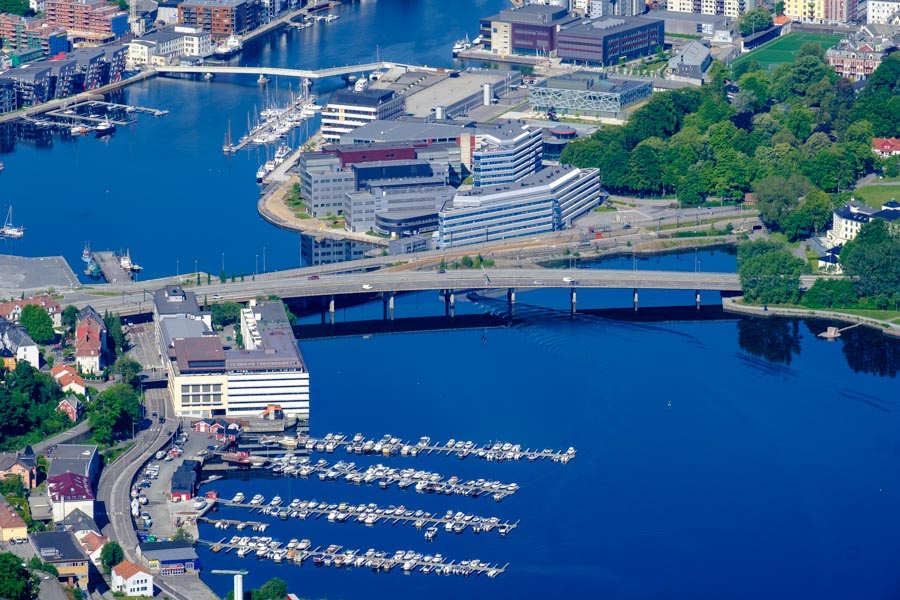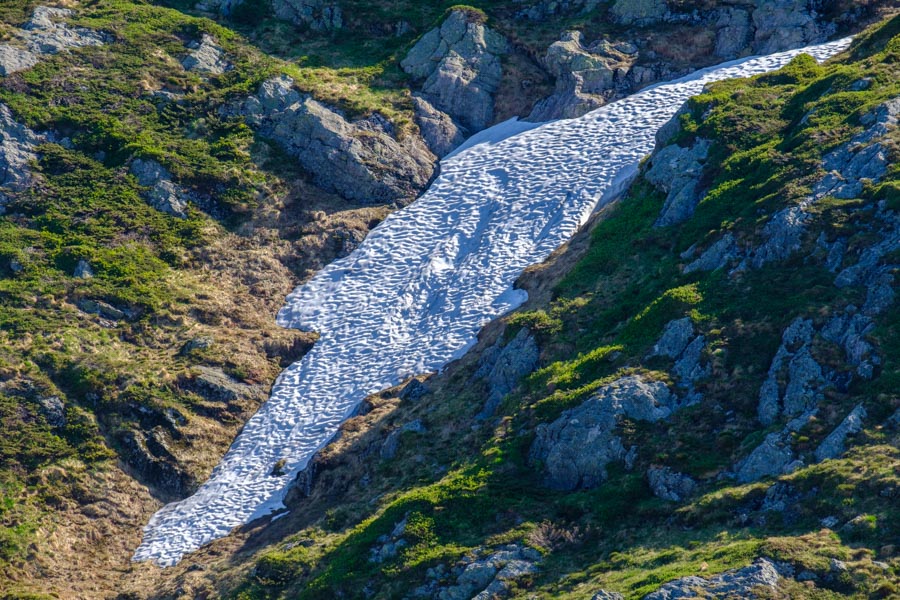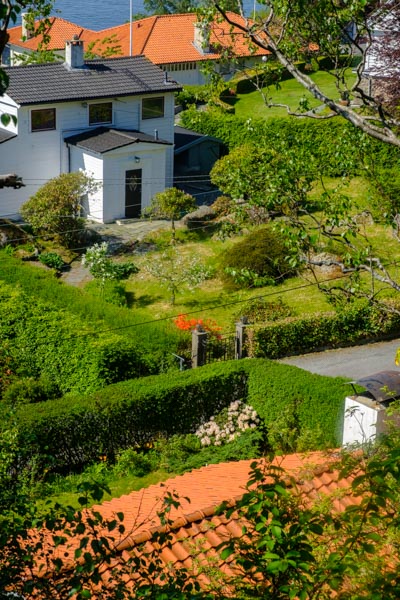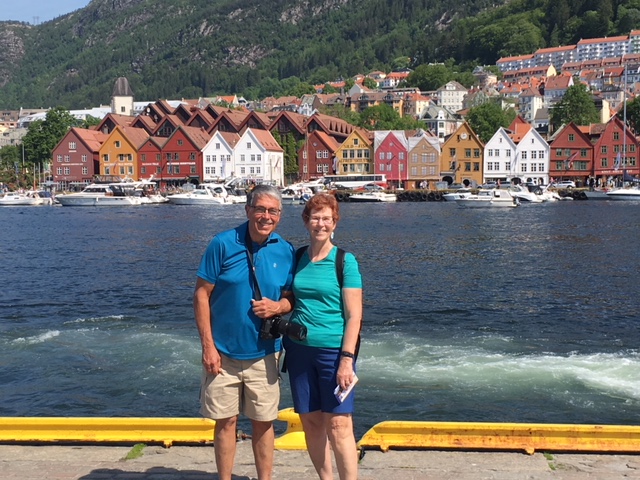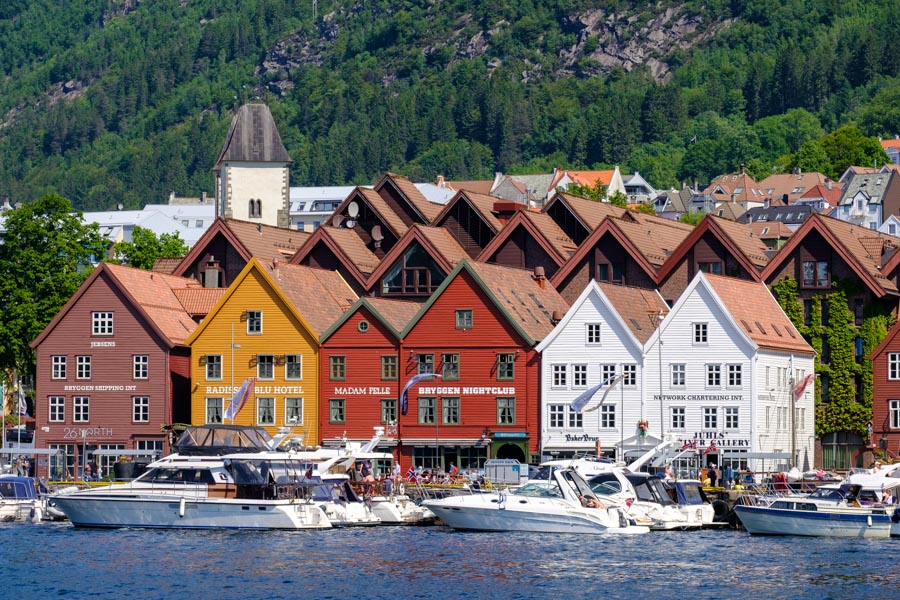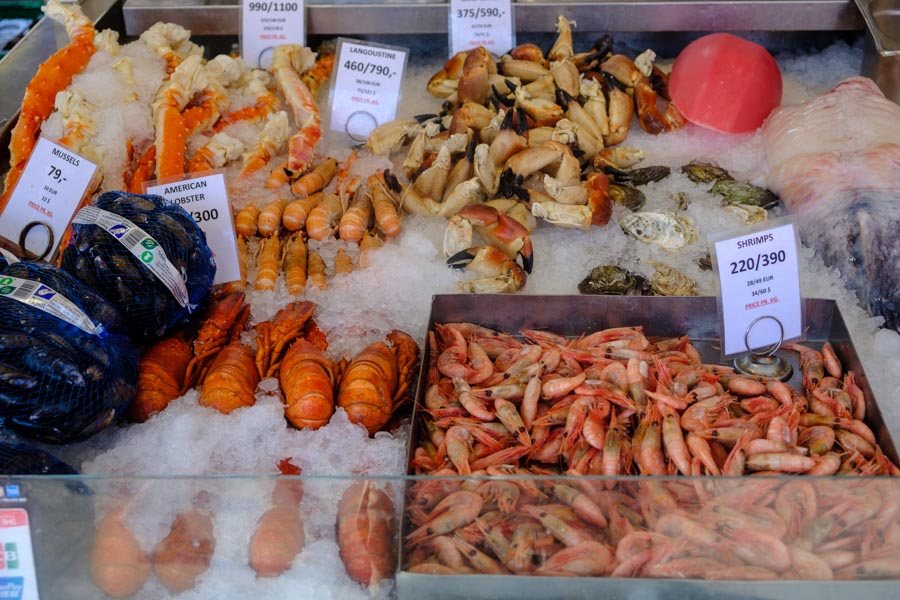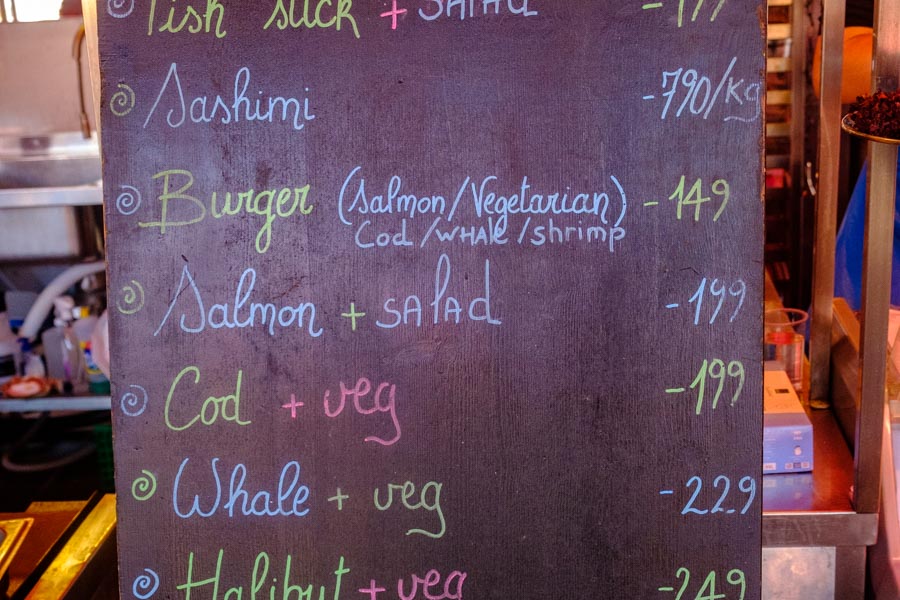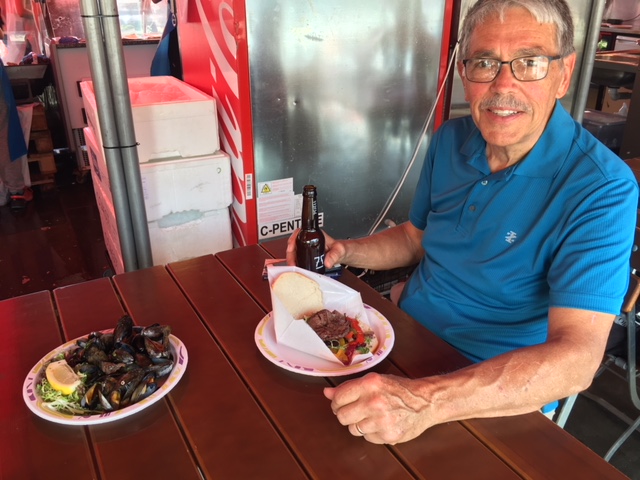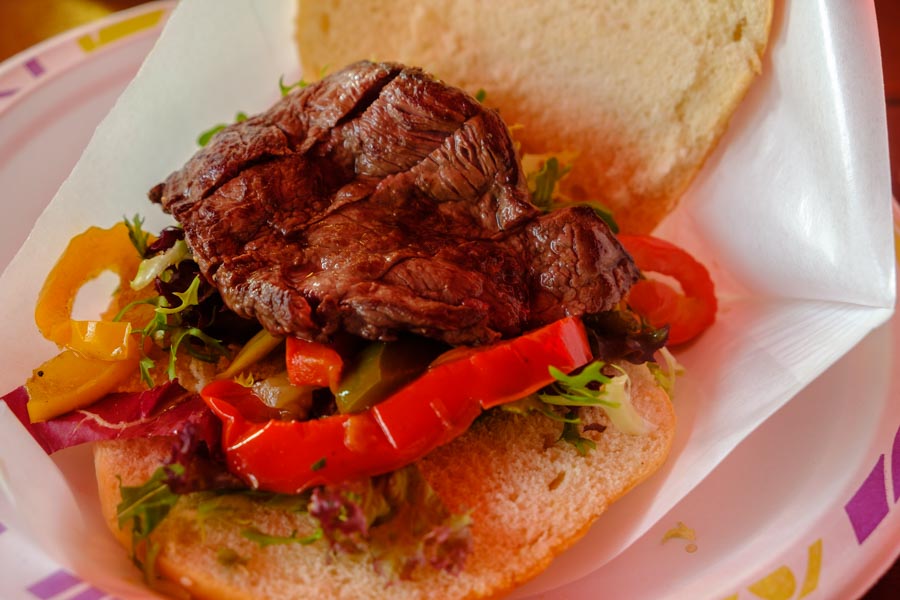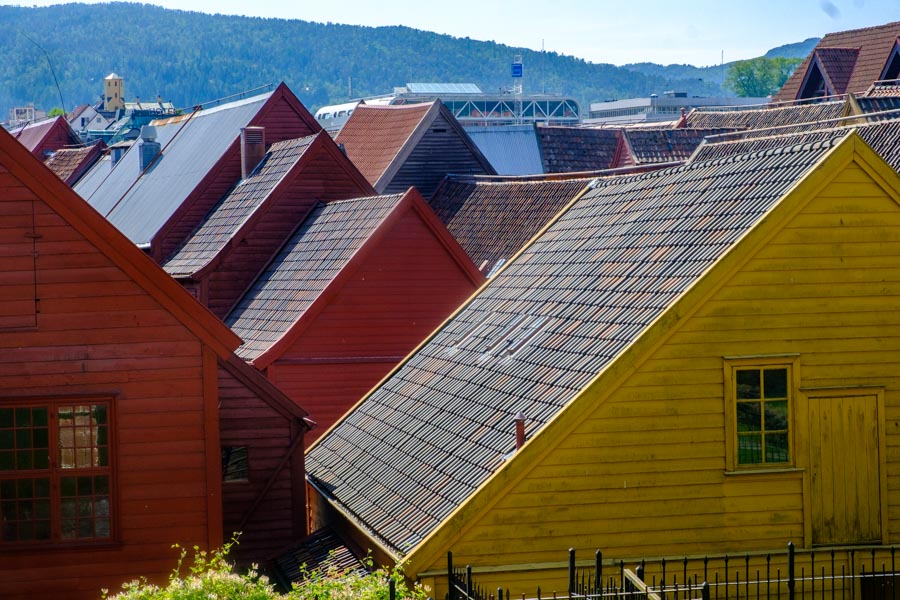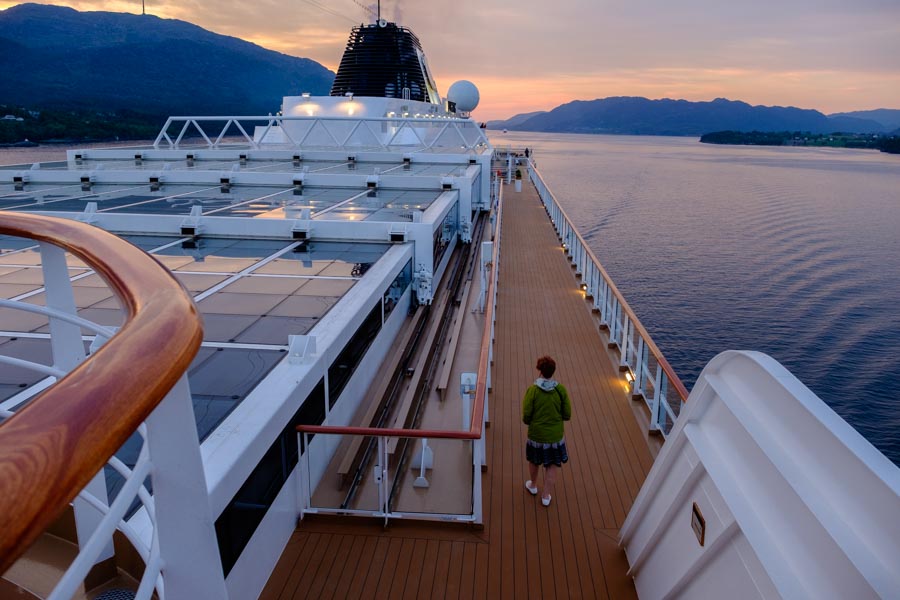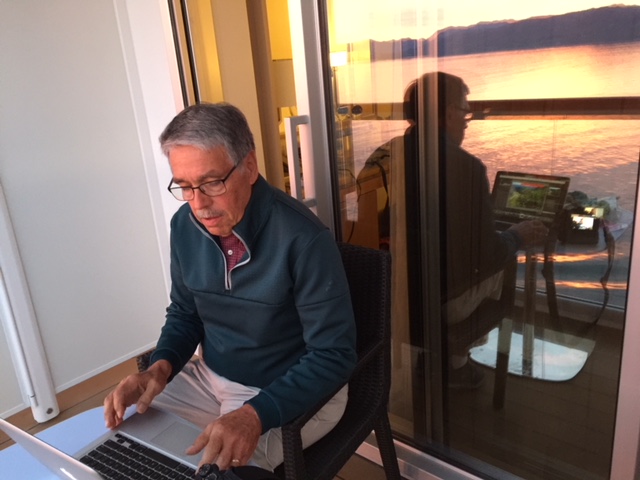Let’s deal with one thing right up front: I bought, paid for and ate a whale burger for lunch. Yes, I know, endangered species and all that. But, think of me you tree huggers as you will, but there it is: I ate a whale burger.
The good news is that whales are protected not only by international agreement but also by terrible taste, texture and appearance. It’s tough, stringy and rubbery. It’s dark brown like beef and blood red in the center. And it tastes like . . . well, whale. Pares nicely with deep fried grasshoppers, I’ll bet. Don’t look for it at Ruth’s Chris or Mickey D’s anytime soon.
I’m sitting on our balcony (Judy’s down for a 30-minute nap) while I type. The sun is shinning and it’s been 80 degrees under clear skies all day. Our tour director said it rains in Bergen an average of 400 days per year (the real number is 260-ish) so we’ve been blessed by incredible weather. Judy and I made good use of it today.
We reported for duty at 8:30 for a guided funicular tour up Mt. Ulriken, one of Bergen’s seven mountains (or nine mountains depending on how you count them). The clear weather made for some great views of Bergen and its fjords, hot cinnamon buns and coffee were included at the summit. This being Sunday, the mountain was covered by hikers of all sizes and ages. Sunday is the traditional family hiking day in Norway and with the beautiful weather the trails were crowded.
We then proceeded on an hour’s long “panoramic” bus tour of downtown Bergen and surrounding districts. Informative but you know how bus tours get to be. Here are a few tidbits we picked up from our guide.
Christianity came to Norway around 1,000 AD, eventually driving out the Nordic gods worshiped by the Vikings. Not long after, in 1020 or so, Germanic traders came to Bergen to trade grain for dried cod fish harvested from the northern shores of Norway. By the end of the 13thcentury Bergen was firmly established as a trading post of the Hanseatic League, a trading consortium of trading guilds that controlled commerce in the Baltic and Northern Europe regions until its decline beginning around 1450. Why did Norwegians allow the Germans in? Two reasons: cod was traded for grains grown in Europe, a commodity in short supply in Norway and; the Black Plague of the 1350s reduced Norway’s population by one third in the first year and by half by 1400. Norway needed grain and people; Europe had people and needed fish.
Our ship has been tied up at the Bryggen quays, the site of the original fishing industry in Bergen. Today it is the site of Bergen’s fish market (where I ate the aforementioned you-know-what) and shops in the reconstructed Hanseatic buildings, painted in bright red, yellow and white colors – you know, the iconic buildings everyone associates with Bergen. Turns out that red was chosen because it was the cheapest color, dyed red with animal blood. Yellow came later and then white, in increasing levels of cost. White became a status symbol; home owners painted the street side white and the back and sides of the house yellow.
By the way, most everything in Bergen is made of wood and most everything has burned to the ground many times in the past 1,000 years. There was a really bad one in 1702 when 90% of buildings burned and as recently as 1955 when 300 buildings went down.
Our guide’s story is interesting: she is half Italian and half Bulgarian. Her father is a sea captain who, when political conditions made living in Bulgaria difficult, took his wife and daughter to sea in a sailboat for 13 years. Along the way she’s learned to speak five languages without ever having one lesson in any of the five. She’s lived in Bergen for two years. Our betting is that the dark, rainy winters will drive her away before too long.
Our morning tour ended at about 12:30 and rather than doing the sensible thing – return to boat, eat our Included Lunch, take the afternoon panoramic bus tour – our guide let us jump ship (bus) and explore on our own. Hence the on-our-own lunch ($55 for the burger, mussels for Judy, a Coke Zero and a beer), a visit to the Hanseatic Museum (with English guided tour), an ice cream cone, shopping for a small over-the-shoulder bag, a hike to the top of the Bergenhus fortress (Judy’s still wondering how I talked her into that climb) and then back to the ship for the 4 PM tea and crumpets and the 5:15 PM muster station drill.
It’s now 6:30 and we’ve been underway for half an hour. It’s time to get cleaned up for a briefing on our next port – Eidfjord and the Scenic Flan Railway tour – and then dinner.
And we’re back from the above, including the Captain’s Welcome party and entertainment review and a sunset stroll on the Sun Deck.
Judy’s footnote: “There is nothing more peaceful than gliding along the water, crocheting and watching the sun set from our balcony at 11PM.”
